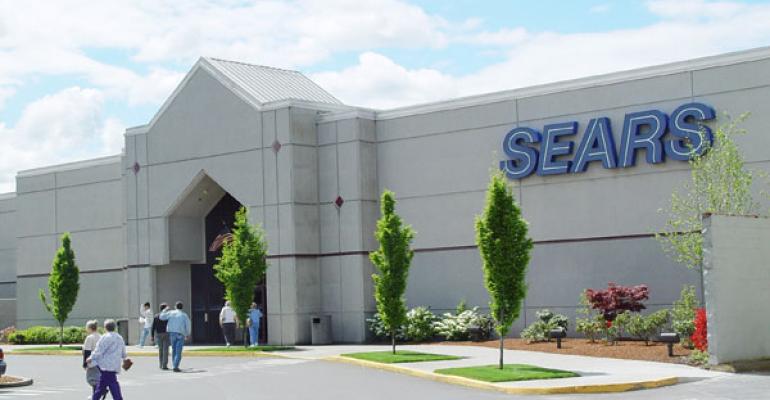Sears Corp. recently signaled its intent to exit leases on 17 unprofitable stores totaling 1.7 million sq. ft., and as part of an existing master lease agreement will pay its REIT spin-off, Seritage Growth Properties, rent though January 2017, plus a termination fee equal to an aggregate of one year’s base rent. These stores are reportedly Kmart locations, following on a mid-September announcement that Sears subsidiary Kmart will be closing 64 stores. Taken within the context of rumors surrounding Sears Corp. in recent months, these newest closings seem to put the company one step closer to liquidation. So the question remains: as the value of Seritage’s holdings grows, does Sears have a strategy to improve its retail operations?
In an Oct. 3 blog post, company CEO Eddie Lampert writes that such a strategy exists, and is being undertaken in part by focusing on a Shop Your Way membership program. Lampert also implies Sears will be able to use proceeds from store sales to shore up its retail division. Media outlets, however, have called the program “a bit convoluted,” questioning if the retailer will even be around for the Shop Your Way holiday push it is planning.
“We are acting more aggressively and continuing to evaluate stores as leases expire and as other opportunities present themselves that improve the economics of Sears Holdings. We expect to end up with a large chain of stores, some owned and some leased, but with a company focused on serving members broadly through Shop Your Way rather than exclusively or predominantly through our stores. Our stores remain extremely important to our future, but as part of an overall focus on serving our Shop Your Way members. We are working to restore the company to profitability. Our significant asset base gives us the wherewithal to fund our business, but we don’t intend to use our asset value to support losses,” Lampert writes.
Retail industry insiders, however, aren’t buying it.
“Capital from store sell-offs is not going back into making the brand a better retail destination,” says Howard Davidowitz, chairman of Davidowitz & Associates Inc., a New York City-based retail consulting and investment banking firm. “Their stores are falling apart and their customer service, pricing and selection are not competitive. They cannot compete in the battlefield for retail.”
Davidowitz notes that when Lampert first invested in the chain, he bought Sears stock back at more than $150 per share. That stock is now worth approximately $20 per share. “Instead of improving stores, Lampert bought back stock,” Davidowitz says. “Customers want great prices, great selection. Both got worse. You can't be in retail and function that way.”
Today, Seritage Growth Properties, which launched last year, holds 266 former Sears and Kmart stores, including 31 in joint venture arrangements with mall REITs Macerich, General Growth Properties and Simon Properties Group. According to Greg Maloney, CEO, retail, Americas, at real estate services firm JLL, “These stores would work well being taken by other retailers in expansion modes, which are looking favorably at malls. This repurposing strategy gives Sears the ability to exit the market, if they so choose.”
Maloney notes that Sears Holdings faces no urgent need to close stores, given that the rents the company pays are in many cases minimal. “Looking at the current market, Sears and Kmart know what markets they want to exit or enter and where their customers are,” he says. “They are assessing stores to see which ones to close and when the right time is. There is no urgency. They are still making money in a lot of these stores compared to rent outlay. It’s a good strategy to repurpose unproductive space; it becomes a win-win for customers and landlords.”
The big question is how sustainable this strategy is in the long term? The answer could affect not just Sears, but other retailers who are in expansion mode and could be interested in picking up the company’s vacated store spaces. Department store chain J.C. Penney is poised as a benefactor, according to Davidowitz, as its targets the same customers as Sears. Seritage is already actively re-leasing the stores, at much higher rents that Sears agreed to during the heyday of department stores and regional malls. Yard House, Nordstrom and Dick’s Sporting Goods are among the chains that took up vacated Sears spaces in the last two years, according to The Street.
One factor that might help Sears in capitalizing on its closed stores is that many of its locations are in busy malls, according to Steven Marks, head of U.S. REITs at Fitch Ratings. Those spaces “can get re-leased at multiples of rent being paid, at significant positive leasing spreads.”
What’s more, regional malls REITs have an interest in investing in Sears and Kmart stores that are located inside or adjacent to their properties, as evidenced by the joint ventures with Macerich, General Growth and Simon. “They want a stake in the fate of these properties,” Marks notes.
As a result, he expects that Sears Holdings’ Seritage strategy will be a gradual one. “This story will get played out in multiple chapters. Whether they terminate leases is going to play out over a very long period of time,” he notes.
Meanwhile, even if Sears continues to close stores, there is still enough demand for retail space to allow the market to absorb the vacant spaces with relative ease, Maloney says.
“Every time there is a retailer in financial trouble it is reported as a doomsday scenario. But we've made it through all retail closures, “he notes. “The market will absorb the space, and landlords will adjust it for the best use, especially as shopping centers become shopping destinations, the center of town, retail hubs.”

